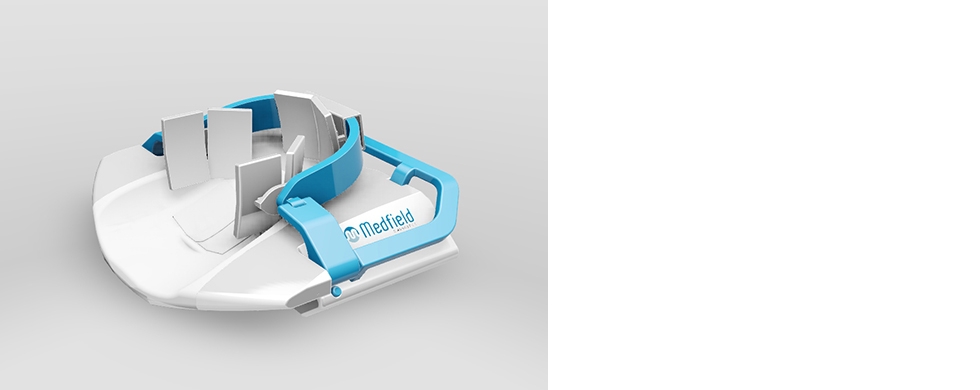Body Interface
Conceptual design of body interface for detection of traumatic internal injuries
Summary
Every year around 30 000 people suffer from stroke. There are around 8500 cases of intracranial injuries (injuries inside the head) and about 900 cases of Pneumothorax (one type of traumatic chest injuries) per year in Sweden
The traumatic injuries might lead to a great deal of harms and even death to the patients if proper treatments cannot be received in time. In order to give proper treatments and lessen the time to receive treatments a trauma diagnostic device can be used. Medfield Diagnostic AB has developed a microwave technology which can scan for traumatic injuries inside the head and chest. In unison with this technology, concepts for attaching a device on the patient have been developed in this thesis. The thesis project has followed a design process with a pre-study phase, ideation phase, concept generation phase, development of the chosen concepts and a final phase of refinement and validation. There were activities and iterations in each phase and a co-design process was achieved with the stakeholders who were mainly developers from the company Medfield Diagnostics AB and users from emergency medical service (EMS). The result was two concepts, Trauma Detector H (TDH) and Trauma Detector C (TDC). TDH is the concept of the device that detects traumatic brain injuries and TDC is the concept of the device that detects traumatic chest injuries. These two concepts are designed to be used inside road and air ambulances during the transfer and work with the currently used products in the pre-hospital environment. They are designed to be easy to use and provide intuitive information for users. By using the devices the EMS staffs could potentially save patients’ lives and reduce the harms of the injuries to the patients.
Skriv ut ![]()


